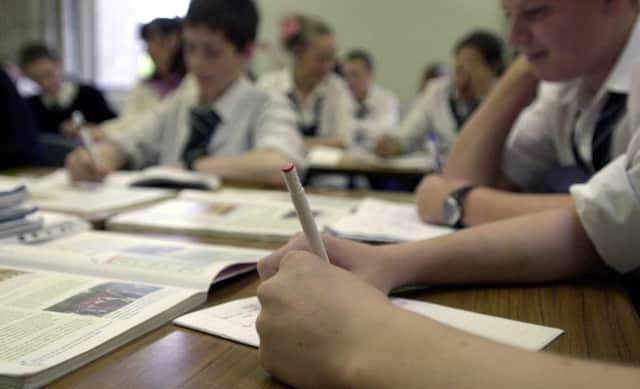OFSTED ANNUAL REPORT: '˜Too many children not doing well enough in region'


The report revealed that out of those accessed in 2016, Derbyshire had the lowest percentage of pupils in good or outstanding secondary schools in the East Midlands.
The proportion of pupils who achieved highly by the end of primary school who then went on to achieve A/A* in their GCSEs in the North and Midlands was six percentage points lower than in the rest of the country.
Advertisement
Hide AdAdvertisement
Hide AdHowever schools in the region judged to require improvement are improving at a much faster rate than in the past.
This year, 169 schools were inspected that had previously judged to require improvement.
Out of these, 119 were found to now be offering a good education, 13 more than would have done if our improvement rate had remained consistent with that from 2013 to 2015. In addition, nine that had required improvement were judged to be outstanding.
Dronfield Henry Fanshaw School was one of nine East Midlands schools previously judged to require improvement but this year the school was judged to be outstanding.
Chapel-en-le-Frith High School was also rated outstanding.
Advertisement
Hide AdAdvertisement
Hide AdIn the breakdown of school performance for the region for 2016 Derbyshire ranked at 131 nationally - the lowest ranking for the East Midlands - with 62 per cent of pupils in good or outstanding schools.
Primary education
The report shows this year in the region, 90 per cent of registered early years providers are good or outstanding: only one percentage point below the national level. Where provision is weaker, it is in our urban centres, particularly Leicester and Nottingham.
The percentage of pupils who achieved a ‘good level of development’ at age five has improved between 2013 and 2016 in all local authorities regionally. However, outcomes for children in the East Midlands at age five are still a little below those nationally.
Across the region in 2016, 67.6 per cent of children achieved a ‘good level of development’: 2.3 percentage points below the national level.
Advertisement
Hide AdAdvertisement
Hide AdThe East Midlands was the second poorest performing region for phonics nationally.
Only two local authorities (Rutland, 86 per cent and Lincolnshire, 83 per cent) performed better than nationally.
The report states: “It is extremely disappointing that this important foundation for reading is not being well taught and that the gap between the ability of those who are disadvantaged and other children are not is very high.”
By the end of key stage 1, only in Derbyshire and Rutland aare pupils doing as well as pupils nationally in reading, writing and mathematics.
Secondary eductaion
Advertisement
Hide AdAdvertisement
Hide AdAlthough nationally over 81 per cent of pupils attend good or outstanding schools, in the East Midlands this is true of just 75 per cent of pupils. Seven local authorities improved over the year, but five still perform below the national level.
Pupils at key stage 4 do less well in the East Midlands than they do nationally.
Provisional results for 2016 show that the region was the third poorest nationally for its Progress 8 score, with only Rutland above the national level. Furthermore, Nottingham and Derby were among the joint 25 lowest ranked authorities for both Attainment 8 and Progress 8.
Commenting on the region’s education performance, Christopher Russell, Regional Director, East Midlands said: “It remains a matter of concern that many children and young people are not doing well enough in the East Midlands region.
Advertisement
Hide AdAdvertisement
Hide Ad“While some schools, colleges and work-based learning providers are working with determination and creativity to ensure fabulous outcomes for their pupils and students, there are too many providers in which pupils, particularly those disadvantaged through poverty, are not doing as well as they should.
“The proportion of primary aged children who attend a good school has improved markedly but it is still below the national proportion. Primary schools are particularly weak in Derby, Nottingham and Rutland.
“It is at secondary level, however, where our young people really fall behind. Just 75 per cent of pupils attend good or better schools, compared with 81 per cent nationally.
“Sixteen-year- old pupils in the East Midlands had made much less progress than their peers nationally since they left primary school. Nottingham and Derby were among the 25 lowest ranked authorities for both the attainment and progress of their pupils.”